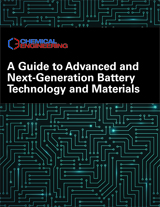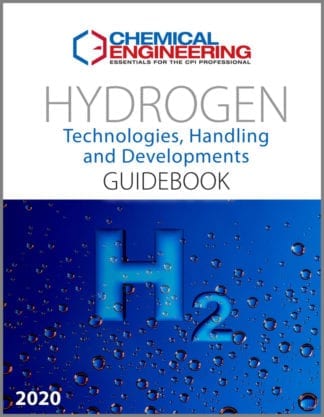Description
This Chemical Engineering guidebook contains tutorial-style engineering and “Facts at Your Fingertips” articles. The collection of practical, how-to pieces provides engineering guidance on an array of topics related to monitoring and managing vapor and particulate emissions that can arise during chemical process operations involving high temperatures and combustion.
Several articles provide guidance for reducing or managing fugitive emissions from burners, combustion units, and flares and other process equipment. Others offer support on protective equipment for personnel, and tips for understanding environmental regulations.
The articles were originally published in Chemical Engineering magazine, from 2012 through 2017. This Guidebook is part of a 2-Volume Set; Volume 1 — entitled “Managing Air Pollution: Eye on Fugitive Emissions and Dust Explosions” — is sold separately.
Delivered in a PDF format. 126 pages.
Articles Include:
Flare Selection for the CPI- 4
- There are many factors to consider when selecting a flare system for CPI sites that can impact safety, operating costs and environmental performance
Key Considerations for the Use of Portable Gas Detectors- 8
- Recent advances in gas-monitoring technologies can greatly increase worker connectivity and safety
Advanced Control Methods for Combustion-11
- Advanced control techniques can raise efficiency and lower pollutant emissions in industrial combustion. The capabilities and adoption of several methods are discussed
Engineering for Plant Safety- 17
- Early process-hazards analyses can lead to potential cost savings in project and plant operations
Eye on Flare Systems- 26
- Proper gas sampling is essential to meet operating and regulatory objectives
Cooling Towers: Estimate Evaporation Loss and Makeup Water Requirements- 30
- Applying mass and energy balance calculations yields critical operating insight
Gas Detention-34
Gas Hazard Definitions and Data-35
Wet Scrubbers- 36
Flare Consolidation Considerations- 37
- Consolidating multiple flares can help mitigate emissions and maintenance
Enclosed Combustion Equipment and Technology- 40
- A thorough understanding of enclosed combustion technologies will help engineers to select the proper equipment to balance emissions-control performance with efficiency, costs and complexity
Cooling Towers: Water-Treatment Options Advance- 44
- Water-treatment programs for cooling towers have evolved in recent years, favoring non-phosphorus programs today. This article reviews the impact on water chemistry and operating reliability
Performance Prediction for Industrial Boilers- 50
- Understanding boiler performance calculations can allow engineers to improve the operation of their facility’s steam system and better engage with boiler-system vendors
Post-Combustion Carbon Capture Technologies- 58
- Several CCS processes hold much promise, and there are challenges yet to be met
Industrial Combustion Products- 62
The Value of Safety Instrumented Systems- 63
- A safety instrumented system (SIS) is important to ensure the safe operation of a plant. The SIS requires up-to-date sensors — recent developments in vortex flowmeters are presented here
Flare-Gas Recovery Methods for Olefin Plants- 65
- Adding flare-gas recovery units at strategic locations of an olefin plant can not only reduces emissions, but will save money as well
Key Questions to Guide Effective Selection of Personal Protective Equipment- 70
- Armed with a proper understanding of chemical exposure risks and available safety solutions, engineers can be confident in selecting the best personal protective equipment to provide reliable barriers to workplace hazards
Burner Inspection and Maintenance- 74
- Burners and their components can be quite complex. Establishing maintenance and inspection best practices encourages long-term operational reliability
Process Safety and Functional Safety in Support of Asset Productivity and Integrity-80
- Approaches to plant safety continue to evolve based on lessons learned, as well as new automation standards and technology
Considering Fugitive Emissions During the Conceptual Design Stage- 85
- The ability to reduce fugitive emissions through the use of strategic design modifications not only protects workers and the environment, but reduces losses of valuable process materials
Best Practices in Capital Equipment Commissioning-92
- Ensuring that real-world commissioning tests are properly executed can benefit both equipment end users and suppliers
Commissioning and Startup: Increase Certainty Through Advanced Planning- 100
- Taking commissioning and startup into consideration during the early design phase can result in more predictable project schedules and more robust equipment designs
Optimizing Flare Operation Through Proper Design- 105
- Flare problems are often caused by the seal systems that are designed to control air ingress. Follow these troubleshooting guidelines to improve design and ensure safe, reliable flare operation
Improve Energy Management to Reduce Your Facility’s Carbon Footprint- 111
- This article describes an approach that uses data analytics for finding and addressing root causes of process deviations that reduce energy efficiency in key plant utility systems, and shares three case examples
Avoid Common Mistakes When Specifying Burner Management Systems-115
- While some aspects of burner management systems may seem intuitive, overcoming misconceptions in their specification and design will help to elevate overall safety
Reduce Risk and Cost with a Lifecycle Approach to Process Safety- 120
- Better upfront planning and management can lead to safer, more productive processes throughout every phase of operation
Co-located Facilities: Untangling Environmental Compliance, Liability and Accountability Issues- 123
- When multiple operators, co-owners, co-operators and third party contractors are all managing different engineered systems at the same location, extra care is needed to manage potential environmental issues that may arise




